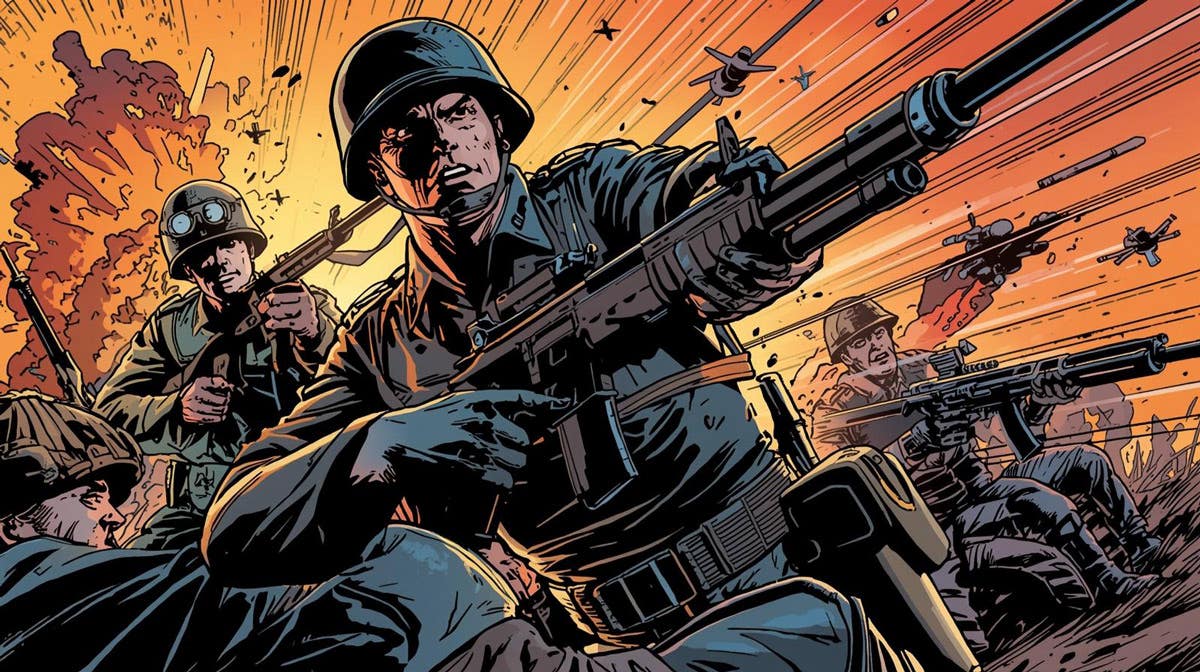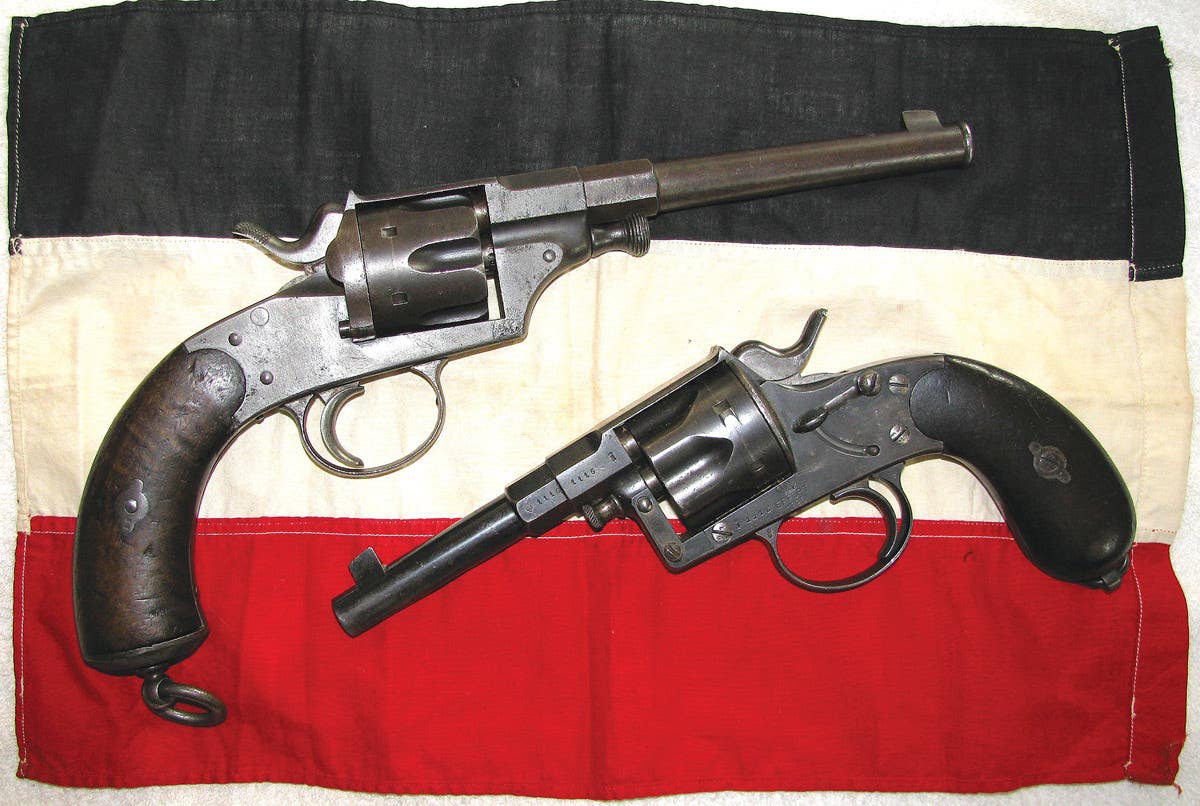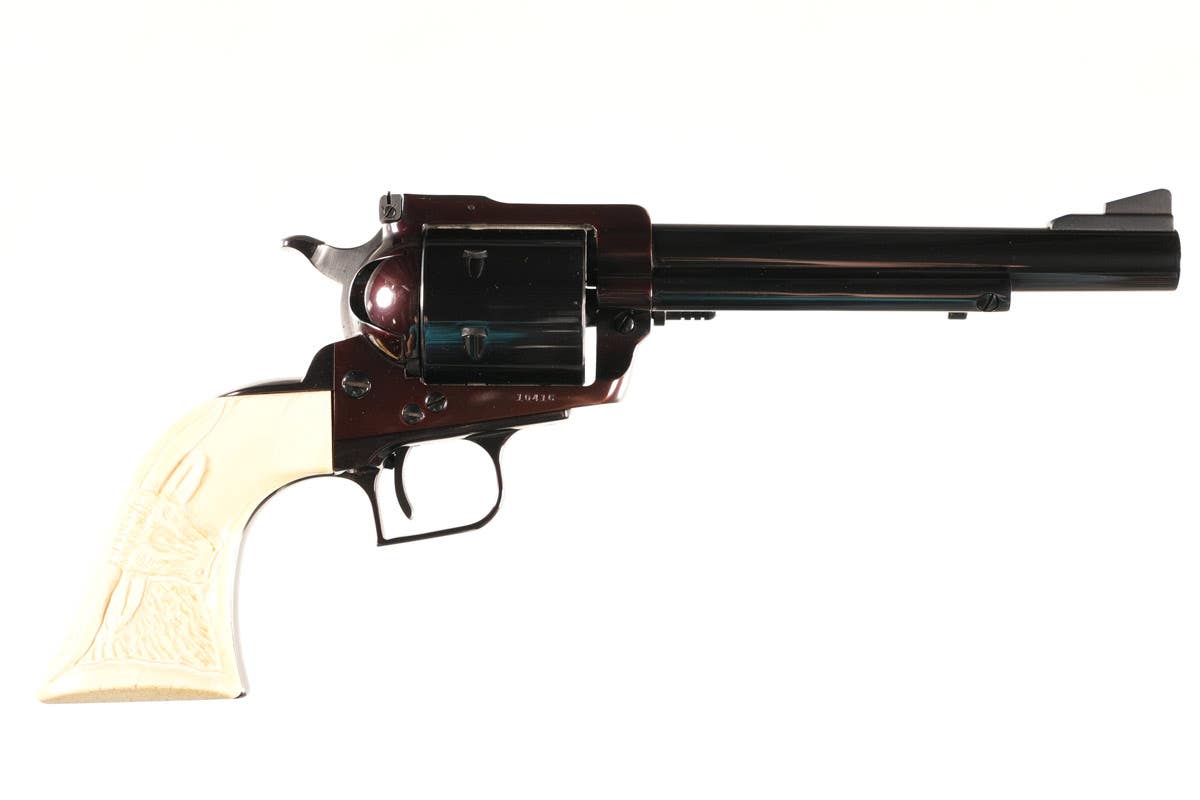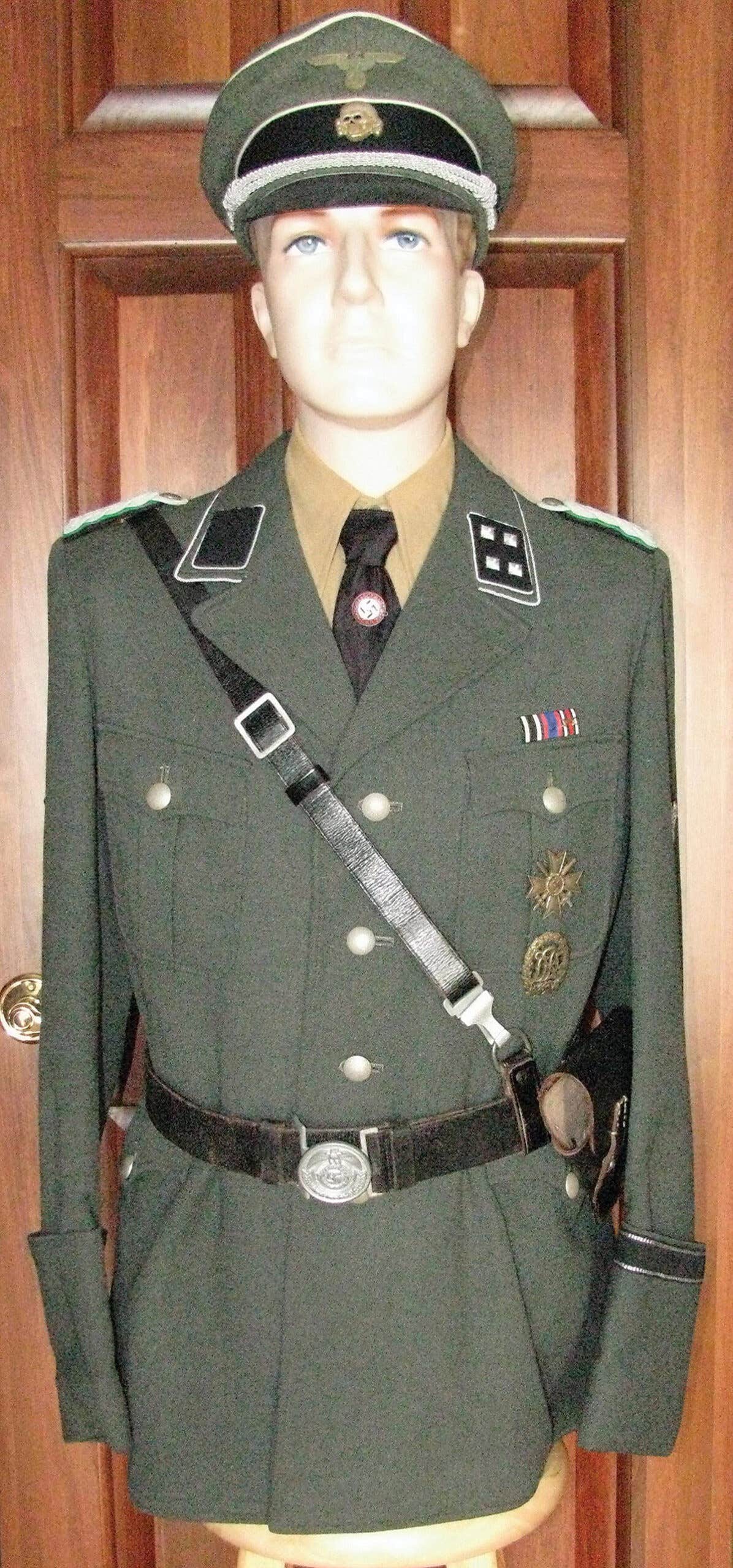10 Questions with Chris William
Author of Third Reich Collectibles talks about the hobby We are all in this together. In an effort to report on the state of different facets of the military collectibles…
Author of Third Reich Collectibles talks about the hobby
We are all in this together. In an effort to report on the state of different facets of the military collectibles market, Military Trader strives to discover and share the opinions of the hobby’s leading dealers and collectors. This month, we had the privilege to talk with Chris William. Most will recognize that Chris has been a frequent contributor to Military Trader. Most recently, he authored the book, Third Reich Collectibles: Identification and Price Guide.
Chris has been a collector of militaria since 1964 (his first purchase was a Gold Mother’s Cross and a Party badge from a local antique store). With so many years of experience in buying, selling, trading and collecting, he has a very good sense of the ebs and flows of the hobby. We are pleased to offer his response to our “10 Questions on Third Reich Collectibles.”
Military Trader: Thanks so much for taking the time to meet with us. Because so much has been published on most every aspect of collecting Third Reich memorabilia, it must have been daunting to consider a book that embraces the whole hobby. Why do you think this is the right time for this book?
Chris William: Today, collectors and historians (both old timers and new comers) have an increasing interest in items associated with Nazi Germany. I was very excited about the Third Reich book project, because it had been some time since there was a low-cost, basic history, and pricing book solely devoted to German militaria offered in the collectors’ market. There is a lot of great information and detail available in the many excellent reference books that deal with specific areas of Hitler’s Germany, but I tried to give a more broad-based look to the content of this book by including light histories and collecting examples forsome of the hundreds of varied groups that existed during the Nazi’s reign.
Military Trader: Third Reich collectibles command some of the highest sticker prices in the military collecting field. Why the demand?
Chris William: After the war was won, the occupation troops took what they wanted, then had much of the remaining Third Reich items turned in and destroyed. Unlike other combatants, many German ex-soldiers and civilians, confronted by the atrocities committed by some of theirmembers, were more likely to rid themselves of their military and paramilitary uniforms and other paraphernalia. Since the demand of collectors throughout the years has grown, and the legitimate supply after the war remains relatively small, the price continues to climb, even on the more common items.
Military Trader: How is this new collector’s approach to amassing Third Reich relics different from when you decided to begin collecting?
Chris William: I have read and observed that new collectors tend to specialize in certain areas and try to complete “sets” of related items. Many like to purchase certain badges, daggers, etc. and find, that by limiting the number of their purchases, it is easier for them to conserve room, money, and more properly display their treasures.
When I started to collect, there were more general collectors who just acquired whatever was available, “tossed it in the corner” and moved on to the next item, sometimes accumulating very large, unrelated groups of things that just looked good to them at the time.
Secondly, younger collectors sometimes seem to acquire items as investment items rather than as examples of the significant history they represent. In the book, I’ve tried to help some of the younger collectors understand the significance of their finds by explaining from where items originated. This trend is probably due, in part, to the proliferation of antique pricing shows that have sprang up all over the TV and other medias.
Military Trader: Helmets, caps, daggers, medals, flags, uniforms—there is so much variety under the umbrella of “Third Reich.” What advice would you give a new collector when faced with a nearly unlimited variety of choices?
Chris William: I can give three pieces of advice to a new collector when faced with the variety of different choices for his or her collection:
1. Spend your first hard-earned dollars on reference materials.A few hundred dollars spent on books today can quantify a person’s interests and prevent them from making common mistakes which will cost him or her thousands down the road. The internet is a great source of information, butcan also be a “minefield” of misinformation for those without a basic knowledge of the hobby.
2. Though this has been said a thousand times before, “Collect what you like.”Your immediate interests may not always be those of your collecting friends, but it really doesn’t matter in the long run as you are the one that must be satisfied with your own collection for a long time. For example, one of my stronginterests is German paper (ID’s, workbooks, etc ). I find that by looking at a newly acquired piece bearing a person’s photo and information, I can bridge the time span between now and then, and allow myself to “live the history” for a few moments. If I show the same ID book tosome of my compatriots in the hobby, they could mostly care less about it and don’t always share my enthusiasm.
3. Finally, try to acquire items that are in the best possible condition, or that have interesting (and believable) provenance. A super clean K-98 bayonet that never left the depot is a great find, but on the other hand, an example with the right wear may have been carried and “been there” from Poland to the capitulation.
Military Trader: Your book highlights a lot of organizations that have not been the most popular to collect in the past. How would you explain the apparent growth of interest in Third Reich organizations whose primary roles were not as combat units, such as the NSKK, SA, Red Cross, etc.?
Chris William: In earlier days of collecting, combat badges, SS items, firearms, and daggers were the mainstays sought after by most of the old time collectors. I personally differed by developing an interest in the residual items from the paramilitary groups, and was able to find a good supply of “unwanted, but Great!” items from the Hitler Youth, NSKK, women’s groups, and others at the time.
As the supply of the combat and high end pieces became too expensive for the average collector, the secondary items became more sought after as replacements. As collectors learned more about the history of thenon-combat groups, collecting of these items quickly stood on its own.
Military Trader:Unlike many Third Reich collectors, you have had the opportunity to know many German WWII veterans. How have these meetings affected your collecting?
Chris William: I was fortunate to meet and get to know quite a few German veterans. Over the years, Iwas able to speak with them about their experiences during and after the war. Most of our American veterans found it difficult to speak about the horrors of war that they experienced, only opening up very late in their lives. German ex-soldiers bore many of the same horrific experiences, and in addition, faced the defeat, destruction, and division of their country, along with sharing the national guilt over the atrocities that some of their fellow countrymen had committed.
Because of my interaction with the German vets, I view the items on today’s market for both their intrinsic values, and for the human connection they represent to me, having known the times and circumstances in which they were used.
Military Trader: If you were forced to focus on just one aspect of Third Reich collecting, what would it be and why?
Chris William: The aspect that I would concentrate on would be the unusual items used during the period. For example, it is very interesting to find an enamel pin from some vague group or event, then investigate as to who, where and when it was worn.
Due to supply problems, German were notorious for re-purposing items. So, it is possible to find legitimate pieces that are somewhat “cobbled up” and don’t fit the norm. Some collectors like to only stick to text book examples (for validation), but there are some very neat examples that deviate from this and really tell great stories.
Military Trader: Many believe that collecting militaria is a viable path of investment. What is your opinion about using military relics as a way to increase monetary gain?
Chris William: The increase in values of Third Reich items is a two-edged sword: It’s great for sellers (who have owned pieces for a long time), but it is not so good for collectors wanting to purchase new pieces. As I mentioned earlier, it seems a trend of many younger collectors that are concentrating more on the money values than historical significance. If they wish to do that, it’s fine, as long as they realize that as with all investments, there is always an element of risk.
WWII German items have skyrocketed in value over the last 30+ years, but they may level out or even go down at some point in the future. If an investor wishes to acquire Third Reich items for monetary gain, I would suggest that they spend the time to learn all they can about legitimate pieces, know the pricing of them, and follow the market in their area, just as they would any other sections of a portfolio.
Military Trader: Our readers love stories about collectors’ “favorite finds.” Tell us what you consider to be your favorite find during the past 30 years.
Chris William: One item that stands out is the Kriegsmarine foul-weather jacket I picked up about 15 years ago. I noticed an ad in the local Buyer’s Guide for a “Rommel Jacket for $40” under clothing for sale. On calling the number, an older gentleman told me that he had a leather jacket with a stand up collar, “You know, like Rommel wore during the war.”
After arriving at his house, he led me to the garage where the coat was hanging on a rack with a bunch of other clothing—he was getting ready for a rummage sale. I asked him where he got it, and he said that a buddy of his had brought it back after the war and given it to him. Later, he had worn it in the 1950s while riding his motorcycle. If that coat could only talk!
Military Trader: What is your greatest takeaway from studying Nazi Germany and collecting Third Reich items?
Chris William: My greatest takeaway is that many of the items we collect belonged to ever daypeople, not the 2 dimensional characters we see in the movies, but common folk just as human as our relatives, ourselves and friends. Many of them fought very valiantly for their country, believing that what they were doing was for a good cause. Only at the end of the war did most Germans come to the realization that Adolf Hitler and the Nazi regime had caused immeasurable harm to their country and its neighbors,andthat the sacrifice of millions of innocent people had been for a totally unjust reason. Any people of any country today must educate themselves to prevent repeating the history that Germany lived. To fall under the unchecked spell of a charismatic leader is the road to ruin as “absolute power corrupts absolutely”.
Military Trader: And finally, the question we all want to ask experienced veteran collectors, such as yourself, “How will Third Reich collecting change over the next fifteen years?”
Chris William: I think that Third Reich collecting will continue to run through cycles ofsupply. There will be times of both “feast or famine.” Ten years ago, I saw a thinning of younger collectors, but this is changing as new people are entering the field.
In the past many items came directly from theveterans who brought them home, while now the majority ofpieces come from veterans’ descendents and out of older collections. New collectors should take the time to educate themselves through reading and networking, as the costs of good items continue to rise.
I wish all of the current and future collectors “Good Hunting!” This hobby has always been a great source of interest and enjoyment for many people throughout the years.
Chris William is the author of Third Reich Collectibles, Identification & Price Guide(ISBN-13: 9781440244483, 8 1/4 x 10 7/8, 240 pages, more than 1,300 color photographs).
John Adams-Graf ("JAG" to most) is the editor of Military Trader and Military Vehicles Magazine. He has been a military collector for his entire life. The son of a WWII veteran, his writings carry many lessons from the Greatest Generation. JAG has authored several books, including multiple editions of Warman's WWII Collectibles, Civil War Collectibles, and the Standard Catalog of Civil War Firearms. He is a passionate shooter, wood-splitter, kayaker, and WWI AEF Tank Corps collector.








